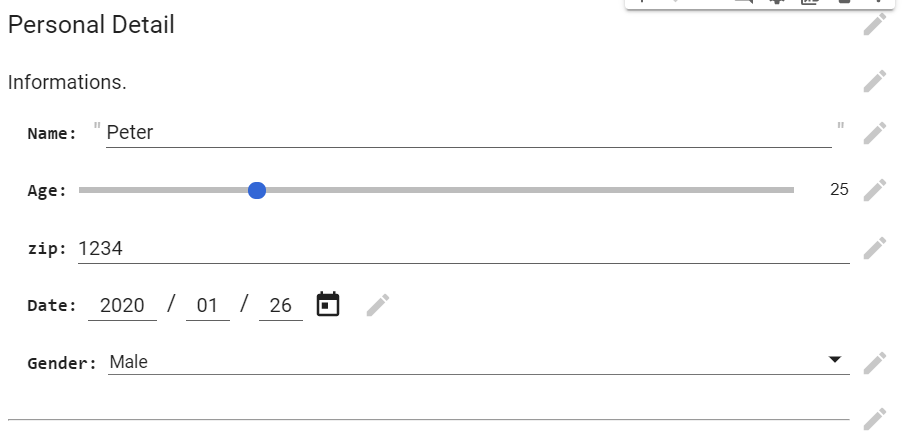选自Medium,作者:Towards AI Team
机器之心编译,机器之心编辑部
Google Colab 是一个免费的 Jupyter 环境,用户可以用它创建 Jupyter notebook,在浏览器中编写和执行 Python 代码,以及其他基于 Python 的第三方工具和机器学习框架,如 Pandas、PyTorch、Tensorflow、Keras、Monk、OpenCV 等。
Google Colab 的好处在于,不需要任何配置就能直接上手使用,并提供免费的 GPU,你可以和任何人共享实时代码、数学公式、数据可视化结果、数据处理、数值模拟、机器学习模型等各种项目。
本文将介绍如何用 Python 使用 Google Colab,以及一些 Colab 使用技巧。
项目地址:https://github.com/towardsai/tutorials/tree/master/google_colab_tutorial
为什么大家都爱 Colab
Colab 的优点包括:
提供了免费的 Jupyter notebook 环境;
带有预安装的软件包;
完全托管在谷歌云上;
用户无需在服务器或工作站上进行设置;
Notebook 会自动保存在用户的 Google Drive 中;
提供基于浏览器的 Jupyter notebook;
完全免费,且提供 GPU 和 TPU(Pro 用户可以使用更多资源,但需要付费);
支持 Python 2 和 Python 3;
提供两种硬件加速器:GPU 和 TPU。
第一步:启动 Google Colab
我们可以使用 Colab 在 Web 浏览器上直接运行 Python 代码,使用指南:https://mktg.best/d7b6u。
启动窗口随之打开,弹窗中提供了多项功能:
它提供了创建 notebook 以及从不同来源上传和选择的选项,比如 GitHub、Google Drive 或本地计算机。
从 GitHub 上传 Notebook
我们可以使用项目 URL,或者搜索组织和用户等方法,直接从 GitHub 上传 Python 代码。
使用 URL 的步骤上传项目的步骤如下图所示:
启动 Google Colab
从弹框中选择 GitHub 这一项。
输入 GitHub 项目 URL 并搜索以获取代码
将完整代码一键上传到 Google Colab notebook
同样地,用户可以通过按名称、日期、所有者或者修改日期过滤保存的 notebook,直接从 Google Drive 上传代码。
从 Kaggle 上传数据
从 Kaggle 生成 API Token
来自 Kaggle 的数据可以直接上传到 Colab,不过这需要 Kaggle 的 API Token 才能完成数据导入,步骤如下:
打开 Kaggle
转至「我的账户」
向下滚动到「API」部分
如果需要,先单击「Expire API Token」以删除先前的 token
点击「Create New API Token」,生成一个新的 token 并下载一个名为「kaggle.json」的 JSON 文件
「kaggle.json」文件包含用户名和密钥,如下所示:
从 Kaggle 上传数据的步骤
将「kaggle.json」文件保存在本地计算机上。
安装 Kaggle 软件包:
!pip install -q kaggle
导入包:
fromgoogle.colabimportfiles
上传本地文件「kaggle.json」:
files.upload()
检查 Colab notebook 是否与 Kaggle 正确连接:
!kaggle datasetslist
从 Kaggle 下载任意比赛数据:
!kaggle competitions download -c competitive-data-science-predict-future-sales
Kaggle 数据将在 Colab 中下载和上传,如下所示:
从 Google Drive 中读取文件
Colab 还提供从 Google Drive 读取数据的功能。
导入包
importglobimport pandasaspdfrom google.colabimportdrive
挂载 Google Drive
drive.mount('/gdrive')
这一步要求填写 Google Drive 的授权码:
授权码输入框
单击链接并生成授权码
从 Google Drive 读取 CSV 文件
file_path = glob.glob("/gdrive/My Drive/***.csv")forfileinfile_path: df = pd.read_csv(file) print(df)
将运行时硬件加速器设置为 GPU
Google Colab 提供免费的 GPU 硬件加速器云服务。在机器学习和深度学习中需要同时处理多个计算,高性能 GPU 的价格很高,但非常重要。
GPU 通过并行化提供优秀的性能,可在一次调用中启动数百万个线程。尽管与 CPU 相比,GPU 的 clock speed 较低,且缺少多核管理功能,但 GPU 的表现通常比 CPU 好。
在 Colab 中设置 GPU 硬件加速器
设置步骤如下:
选择 Runtime → Change runtime type
在弹出窗口中选择「GPU」
检查 Colab 中 GPU 的详细信息
导入重要的包
importtensorflowastffrom tensorflow.python.clientimportdevice_lib
检查 GPU 加速器
tf.test.gpu_device_name()
检查用于 GPU 的硬件
device_lib.list_local_devices()
使用 GPU 的代码示例
在未选择运行时 GPU 的情况下检查可用 GPU 的数量,使其设置为「None」。
importtensorflowastfno_of_gpu = len(tf.config.experimental.list_physical_devices('GPU'))print("Total GPUS:", no_of_gpu)
硬件加速器为 None,因此 GPU 数量的值为 0。
将运行时硬件加速器设置为 GPU:
importtensorflowastfno_of_gpu =len(tf.config.experimental.list_physical_devices('GPU'))print("Total GPUS:", no_of_gpu)
硬件加速器为 GPU,因此 GPU 数量值为 1。
在 GPU 上执行张量乘法:
try: withtf.device('/device:GPU:1'):tensor1 = tf.constant([[1.0,2.0,3.0], [4.0,5.0,6.0]])tensor2 = tf.constant([[1.0,2.0], [3.0,4.0], [5.0,6.0]])result= tf.matmul(tensor1, tensor2)print(result)exceptRuntimeErrorasexception:print(exception)
张量乘法结果。
将 GitHub repo 复制到 Google Drive
GitHub repo 代码可以复制和存储到 Google Drive 中,具体步骤如下:
挂载 Google Drive
fromgoogle.colabimportdrivedrive.mount('/content/gdrive')
进入 Google drive,创建目录「project」。
%cdgdrive/My Drive/mkdir project%cdproject/
复制 GitHub repo,例如:
!gitclonehttps://github.com/saniyaparveez/youtube_video_type_prediction.git
检查复制的项目
!ls
Colab 魔法
Colab 提供许多有趣的 trick,包括多个可以执行快速操作的命令,这些命令通常使用 % 作为前缀。
Colab 魔法命令列表
%lsmagic
本地目录
%ldir
获取 Notebook 历史
%history
CPU 时间
%time
系统运行多久?
!uptime
展示可用和已用的内存
!free-hprint("-"*100)
展示 CPU 产品规格
!lscpuprint("-"*70)
列出所有运行虚拟机进程
%%shecho"List all running VM processes."ps -efecho"Done"
在 HTML 中嵌入文本
%%htmlTowards AI is a great publication platform
设计 HTML 格式
#@titlePersonal Details#@markdownInformation.Name ='Peter'#@param{type:"string"}Age =25#@param{type:"slider", min:1, max:100}zip =1234#@param{type:"number"}Date='2020-01-26'#@param{type:"date"}Gender ="Male"#@param['Male','Female','Other']#@markdown---print("Submitting the form")print(string_type, slider_value,number, date, pick_me)print("Submitted")
在 Google Colab 中生成 HTML 格式。
单元格执行输出
绘图
Google Colab 还可用于数据可视化。以下代码和图展示了 Google Colab 对一个以上多项式的绘图,Y = X³+X²+X。
x= np.arange(-10,10)y = np.power(x,3)y1 = np.power(x,3) + np.power(x,2) + xplt.scatter(x,y1,c="red")plt.scatter(x,y)
以下代码和图用于生成热图:
importmatplotlib.pyplotaspltimport numpyasnpimport seabornassnslength =10data=5+ np.random.randn(length, length)data+= np.arange(length)data+= np.reshape(np.arange(length), (length,1))sns.heatmap(data)plt.show()
Google Colab 中的 TPU
Google Colab 使用 TPU(张量处理单元)进行 Tensorflow 图上的加速。TPU 是谷歌开发的、专为神经网络机器设计的 AI 加速器专用集成电路 (ASIC)。
TPU 具备优秀的 teraflop 配置、浮点运算性能等。每个 TPU 的计算能力达到每秒 180 万亿次浮点运算(180 teraflops),拥有 64 GB 的高带宽内存。
在 Colab 中设置 TPU
在 Google Colab 中设置 TPU 的步骤如下:
运行时菜单 → 更改运行时
选择 TPU 硬件加速器
确认在 TPU 硬件加速器上运行
这需要 TensorFlow 包。以下代码和实现可以确认 Colab 是否设置 TPU 加速器:
importtensorflowastftry: tpu = tf.distribute.cluster_resolver.TPUClusterResolver() print('Running on TPU', tpu.cluster_spec().as_dict()['worker'])exceptValueError:print('Exception')
如果 TPU 未设置成功,则代码会报错。
结论
Google Colab 是一种 Jupyter notebook 环境,通过执行基于 Python 的代码来构建机器学习或深度学习模型。Google Colab 完全免费(pro 版除外),并提供 GPU 和 TPU 硬件加速器,易于使用和共享。
本文列举了 Google Colab 的使用技巧,希望能够帮助大家更好地利用 Google Colab 资源。
资源
Google colab 实现:https://colab.research.google.com/drive/1ymIYzFg4Q7iBjnTut31aBqPHgOpkjHYD?usp=sharing
Github repository:https://github.com/towardsai/tutorials/tree/master/google_colab_tutorial
参考文献
[1] Google Colab, https://colab.research.google.com/
[2] Python 2 Deprecation, Google Colab, Google, https://research.google.com/colaboratory/faq.html#python-2-deprecation
[3] Machine Learning Algorithms for Beginners with Code Examples in Python, Pratik Shukla, Roberto Iriondo, Towards AI, https://towardsai.net/p/machine-learning/machine-learning-algorithms-for-beginners-with-python-code-examples-ml-19c6afd60daa
[4] Project Jupyter, https://jupyter.org/
[5] Google Colab, FAQ, https://research.google.com/colaboratory/faq.html
原文链接:https://medium.com/towards-artificial-intelligence/google-colab-101-tutorial-with-python-tips-tricks-and-faq-7689bd4d24b4





























